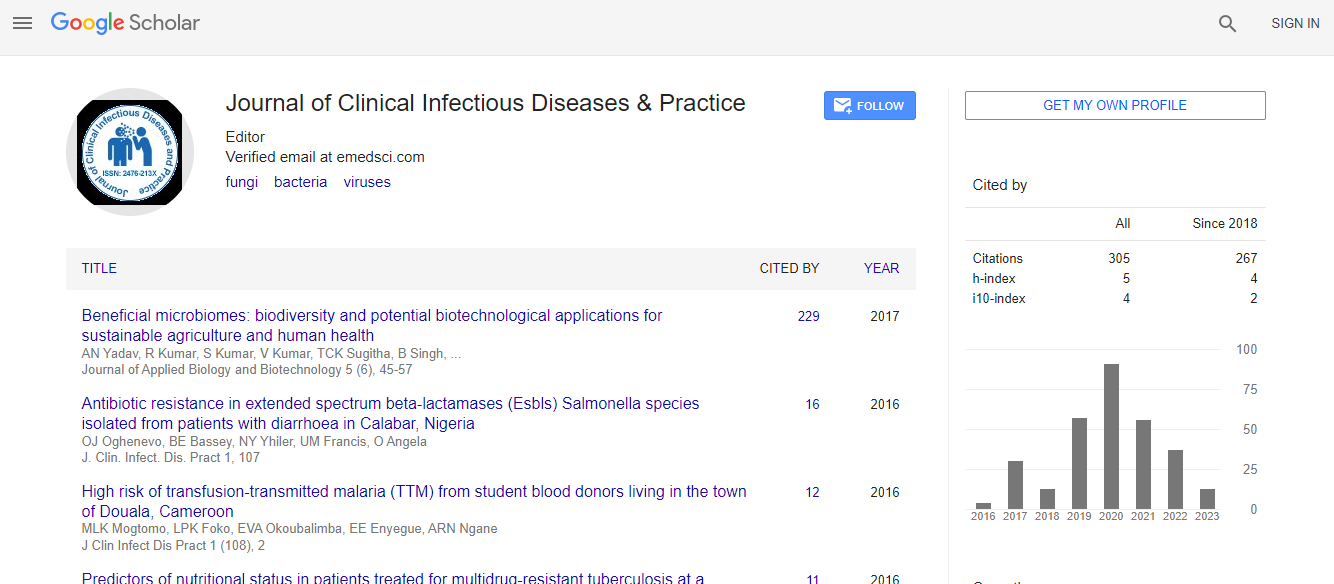Research Article
Risk Factors Associated with Clostridium difficile Infection in a Pediatric Hematology-Oncology Ward with Analysis of the Infection Control Measures
Zainab Al-Musa1 and Mahmoud Shorman1,2*
1Internal Medicine Department, King Fahad Specialist Hospital, P.O. Box 15215, Dammam 31444, Saudi Arabia
2Internal Medicine Department, Marshall University, Huntington, USA
- *Corresponding Author:
- Mahmoud Shorman
Internal Medicine Department
King Fahad Specialist Hospital
P.O. Box 15215, Dammam 31444
Saudi Arabia
Tel: 1304691100
E-mail: shorman@marshall.edu
Received date: June 20, 2016; Accepted date: July 16, 2016; Published date: July 19, 2016
Citation: Al-Musa Z, Shorman M (2016) Risk Factors Associated with Clostridium difficile Infection in A Pediatric Hematology-Oncology Ward with Analysis of the Infection Control Measures. J Clin Infect Dis Pract 1:106. doi: 10.4172/2476-213X.1000106
Copyright: © 2016 Al-Musa Z, et al. This is an open-access article distributed under the terms of the Creative Commons Attribution License, which permits unrestricted use, distribution, and reproduction in any medium, provided the original author and source are credited.
Abstract
Introduction: The impact of clostridium difficile infection (CDI) on patients’ health and hospitals’ cost is significant. Currently CDI is recognized as an increasingly important pathogen in children with increasing incidence among pediatric patients. Data is scarce on the incidence and risk factors of CDI in Saudi Arabia, especially in pediatric oncology population. In this study, we report the first outbreak of CDI in pediatric hematology-oncology ward in Saudi Arabia and describe the associated risk factors for CDI.
Methods: This is a descriptive, epidemiologic hospital based case-control study of pediatric Patients in hematology-oncology ward who had CDI in an outbreak from January 2012 to June 2013 at a tertiary hospital in Saudi Arabia, matched randomly to a control group who were admitted in the same ward during the study period. The main outcome measure was the adjusted odds ratio estimates of potential risk factors for CDI infection. We also describe the control measures that were implemented to control this outbreak.
Results: Risk factors associated with CDI were antibiotic use with cotrimoxazole being the most used one, and length of hospital stay. Controls were found to have been treated more with penicillins and aminoglycosides.
Conclusion: Factors associated with CDI infection are often complex and maybe confounded by local variables, antibiotic exposure and lengthy hospital stays are among many risk factors for CDI in high -risk populations. Our study also highlights the importance of infection control measures in controlling and preventing outbreaks of CDI.

 Spanish
Spanish  Chinese
Chinese  Russian
Russian  German
German  French
French  Japanese
Japanese  Portuguese
Portuguese  Hindi
Hindi 
